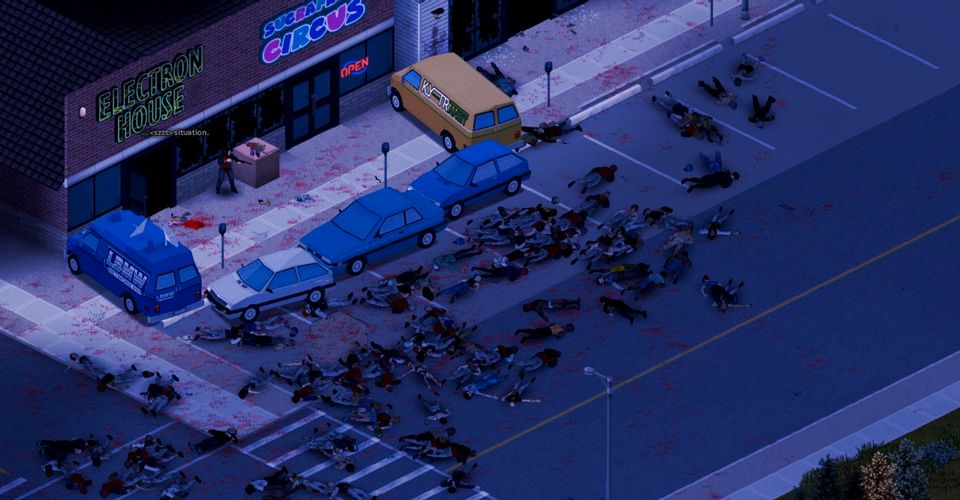Project Zomboid: Foraging Guide (Locations, Items, & More)

In Project Zomboid, players will eventually have to turn to foraging to keep themselves alive when the world’s resources run out or expire. Moodles have to be maintained and the zombies will never stop coming, so unless players are living a completely isolated lifestyle, eventually there will be nothing left to obtain besides nature’s bounty. This timing is usually far beyond the player’s lifespan, but if players are sheltered in a smaller city or a forest cabin, characters can die from running out of food and being forced to relocate.
Foraging is the answer to all of the situations above. With sufficient foraging skills and the aid of traits that affect foraging, it becomes a consistent source of food and materials, even in the worst situations. Some of the items have time of year requirements, but consistent loot can be found regardless of the time of year, especially at higher levels. In addition, foraging is always viable; while players can temporarily deplete an area of items to forage, over time the area replenishes its stock of items to forage, so players will never truly run out.
Foraging skill is acquired by, as players might guess, foraging things. Foraging skill books will greatly accelerate the speed players acquire foraging experience, but they can be gained at a steady rate regardless. Foraging is more difficult at lower levels, when affected by negative moodles, and by certain negative traits, while foraging is improved with levels and certain positive traits. Trait and moodle modifiers don’t affect the player’s ability to find types of items but can make them more difficult to spot in the first place. Foraging levels not only make items easier to spot but increase the variety of items that can be spotted in general to include more valuable items.
Project Zomboid Foraging Mechanics Explained

There are various factors that affect foraging success, so here’s a list of everything currently known about the foraging system. Do note that these mechanics are liable to change in future updates, as Project Zomboid is a game undergoing constant development.
Unnatural Items
Items that have been dropped manually by a player or zombie can be spotted at any foraging level in Project Zomboid, and are separate from the rest of the foraging system. These items will not give any foraging skill when found and are visible on the ground regardless of being in search mode or not. That being said, these items can be very easily missed if players aren’t specifically looking for them, so they can be helpful to find nonetheless.
Location
Location can be one of five types: urban, road, vegetation, forest, and deep forest. These determine the base chances of finding certain types of items and should be the first thing players consider when choosing where to forage. The game gives information on the relative rarity of types of items in each location but unfortunately provides no specific information.
Weather and Lighting
Weather affects the base chance of finding items (harsher weather means harder foraging), and also affects the chance of certain types of items appearing. For example, the Project Zomboid developers mentioned that frogs are more commonly found in the rain, but less commonly found when it’s snowing. In addition, weather affects the player as well, since it is significantly harder to see where to go in the fog or rain. As players might imagine, darkness directly impacts the player’s ability to find items, with more darkness having a more severe penalty.
Time of Year
While the exact details are unknown and likely to change in the future, some items are found more or less frequently depending on the time of year in Project Zomboid. For example, wild onions cannot be found from October to February, are easier to find in May, June, and July, and are harder to find in March and September.
Knowledge
Characters that have level 7 cooking skill or higher in Project Zomboid gain the ability to detect poisonous berries and mushrooms. Additionally, characters that chose the Herbalist trait upon character creation or read the Herbalist skill book gain the ability to forage medicinal herbs at any foraging level and can also detect poisonous berries and mushrooms.
Movement
Characters have a 33% foraging radius bonus while aiming, and a 10% foraging radius bonus while sneaking. On the other hand, running or sprinting both results in nearly 0 search radius, and exit the search mode shortly anyways, so players should avoid running if they’re actively trying to forage items.
Moodles
When tired or exhausted, players have a decreased foraging radius, and this penalty scales with the severity of the moodle. In addition, when players are hungry, the chance to find food while foraging instead of other items is increased, but the exact extent to which this affects chances is currently unknown.
Traits and occupations can both have a positive and negative effect on the distance that items can be seen while foraging as well as the effects of weather and darkness, so here’s a list of which traits and occupations do what. Note that the base foraging radius in Project Zomboid is 10 at its maximum assuming nothing is affecting it.
Occupations
- Park Ranger: +1 radius, 33% weather resistance, 10% darkness resistance
- Fisherman: +1 radius, 33% weather resistance
- Chef: +1 radius, 33% weather resistance
- Lumberjack: +1 radius, 33% weather resistance, 10% darkness resistance
- Veteran: +1 radius, 33% weather resistance, 10% darkness resistance
- Farmer: +1 radius, 33% weather resistance
- Unemployed: +1 radius, 10% weather resistance
Traits
- Lucky: +1 radius
- Hiker: +1 radius, 7% weather resistance
- Former Scout: +1 radius, 13% weather resistance
- Hunter: +0.7 radius, 7% weather resistance, 5% darkness resistance
- Eagle Eyed: +0.5 radius
- Gardener: +0.4 radius, 13% weather resistance
- Outdoorsman: +0.4 radius, 13% weather resistance, 7% darkness resistance
- Cook: +0.2 radius
- Cat’s Eyes: +0.2 radius, 20% darkness resistance
- Nutritionist: +0.2 radius
- Herbalist: +0.2 radius, 7% weather resistance
- Unlucky: -1 radius
- Agoraphobic: -1.5 radius
- Short Sighted: -2 radius
Foraging Skill
Foraging skill directly impacts the radius at which players can find items but also determines what items can be found in the first place. Here’s a list of what items are available at which levels in Project Zomboid.
- Level 0: junk items, berries, mushrooms, chipped stones, stones, tree branches, twigs, violets, medicinal herbs (if the player has the Herbalist skill)
- Level 2: wild vegetables and their seeds, grape leaves, worms
- Level 3: wild onions, logs
- Level 4: recipe magazines, rare junk items, cherries, crickets, rosehips
- Level 5: dead rats, oranges
- Level 6: insects, jalapenos, habaneros, limes, lemons
- Level 7: frogs, dead birds, grapes, peanuts
- Level 8: dead squirrels, strawberries, pears, grapefruits, corn, eggs, wild eggs
- Level 10: dead rabbits
Project Zomboid is available on PC.
About The Author

















